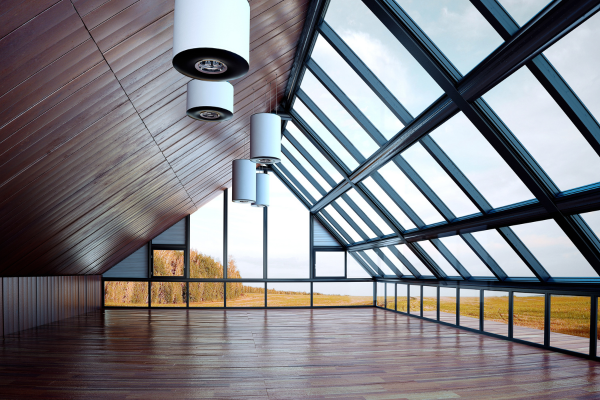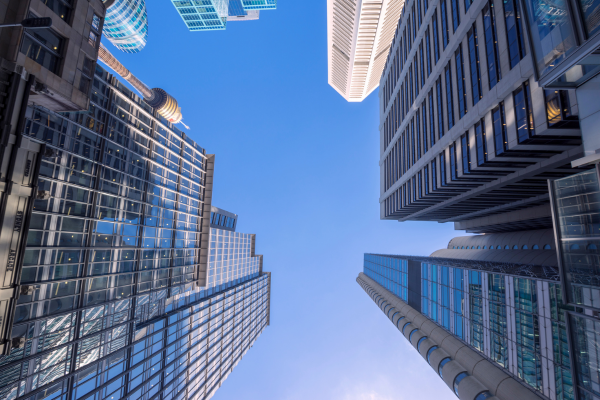.png)
Crafting Tomorrow: The Role of Robotics and VR in Architecture
Imagine stepping into the future, where buildings come to life not just in drawings, but right before your eyes, thanks to robots and virtual reality (VR). It sounds like something out of a sci-fi movie, doesn't it? But it's becoming our reality, shaping how we create and experience architecture. Robots are stepping out of their traditional roles and onto construction sites, offering precision and efficiency that was once unimaginable. Meanwhile, VR lets us walk through our future homes or offices without a single brick being laid. This blend of technology is not just changing the way architects work; it's revolutionizing the entire building process, from the initial sketch to the final construction. And the best part? It's making architecture more accessible and understandable for everyone involved. So, let's dive into this exciting journey together and explore how robots and VR are not merely tools of the trade but partners in crafting the future of our physical world.
The story of architecture and robotics is like watching a child grow up. At first, robots took simple steps, helping out with tasks that were either too dangerous or repetitive for humans. Imagine a robot arm that can lay bricks all day without getting tired. Now, these robotic arms are not just helpers; they've become team members, bringing architects' wildest dreams to life with precision and speed.
As technology got better, so did the robots. They started handling more complex tasks, like cutting intricate designs in wood or metal, which used to take humans much longer to do. This change meant buildings could now have designs that were once too difficult or expensive to make by hand.
But it's not just about making things faster or with more detail. Robots are helping us think differently about what we build. They're pushing architecture into new territories, letting us explore shapes and forms we couldn't easily achieve before. It's like having a new set of super tools that open up a world of possibilities.
And as robots become smarter, they're starting to work alongside humans more closely. They can learn from the construction sites they work on, adapting to different tasks or even spotting when something doesn't look right. This partnership between humans and robots is making the process of bringing buildings to life more efficient and, in many ways, more creative.
So, as we look at the buildings around us and those yet to come, it's clear robots are playing a bigger role in how we shape our world. They're not just tools; they're part of the architecture family, helping us build the future.

Virtual reality (VR) is like a magic door that takes architects and their clients into the world of 'what could be'. Gone are the days when we could only imagine what a space would look like once completed. Now, with a VR headset, you can step into a building before the first stone is even laid. It's changing the game in how architects design and how clients see their future spaces.
With VR, architects can create and explore a space in 3D, making changes in real-time. It's like playing a video game where you're both the player and the creator, tweaking and twisting elements until they're just right. This tool is invaluable not just for architects but for everyone involved in a project. Clients no longer have to rely on flat, hard-to-interpret blueprints. They can walk through their future home or office, get a feel of the space, and suggest changes that they might not have thought of otherwise.
Moreover, VR isn't just about the visuals. It allows for an immersive experience that can simulate lighting at different times of the day, how sounds echo in a room, or even how furniture might fit in a space. This level of detail helps clients make decisions faster and with more confidence, reducing misunderstandings and making the whole design process smoother.
This new dimension of architectural design is not just about making things look cool; it's a practical tool that bridges the gap between imagination and reality. It empowers clients and architects alike, making the journey from concept to completion a shared and more tangible adventure.
When we bring robotics and VR into the mix, we're not just tweaking how architecture is done; we're setting the stage for a whole new era. Think of it like a dance between the physical and the virtual, where each step is precisely choreographed by technology. This duo is redefining not only the design and construction phases but also how we interact with and understand spaces before they're built.
Robots, with their ability to perform tasks with superhuman precision, have started to work hand in hand with VR technologies that allow us to visualize and explore architectural ideas in immersive environments. This powerful combo means architects can test and tweak designs in virtual spaces, then rely on robots to turn those refined ideas into reality with an accuracy that was once unthinkable.
What's truly exciting is the potential for real-time feedback between the virtual and physical realms. As robots build, VR can be used to monitor progress and simulate the next steps, ensuring every piece fits perfectly into the larger puzzle. This level of integration could dramatically reduce errors, save time, and even pave the way for more sustainable building practices by minimizing waste.

Looking ahead, the fusion of robotics and VR promises not just efficiency but a revolution in creativity. Architects are no longer bound by the limitations of traditional tools and methods. Instead, they're free to explore more ambitious, innovative designs, safe in the knowledge that their visions can be accurately brought to life. This is the future of architectural practice: more daring, more precise, and more connected than ever before.
Integrating robotics and VR into architecture isn't all smooth sailing. While these technologies offer incredible potential, they also come with their own set of challenges and ethical considerations. One big hurdle is the cost. The technology for both robotics and VR is still expensive, which can put it out of reach for smaller firms or projects with tight budgets. This raises concerns about equity in the industry—will only the wealthiest clients and architects get to benefit from these advancements?
Then there's the learning curve. Not everyone is a tech wizard, and adopting new technologies means architects and construction teams need to learn new skills. This can slow down projects and frustrate teams if not managed well.
Ethically, we also need to think about privacy and data security, especially with VR. When clients step into a virtual space, they leave digital footprints. Who has access to this data? How is it used? These are questions we need to address to ensure client trust.
And we can't ignore the impact on jobs. As robots take on more tasks, what happens to the workers they replace? It's essential to find a balance, ensuring technology enhances the industry without leaving people behind.
In short, while the future of architecture with robotics and VR is bright, it's not without its shadows. We need to navigate these challenges thoughtfully, ensuring we use these tools in ways that are fair, ethical, and beneficial for all.
As we stand on the brink of a new era in architecture, the fusion of robotics and VR is not just an exciting possibility but a reality that's reshaping our approach to designing and building spaces. This journey into the future of architecture promises a world where creativity knows no bounds, efficiency is paramount, and the client experience is more immersive and interactive than ever before. However, as we navigate this new landscape, we must tread carefully, considering the ethical implications and challenges that come with such profound technological change. By embracing innovation with responsibility, we can ensure that the future of architecture is not only technologically advanced but also equitable and sustainable for all. Let's look forward to a future where robots and VR play a pivotal role in crafting the spaces of tomorrow, bringing dreams to life with precision and imagination.